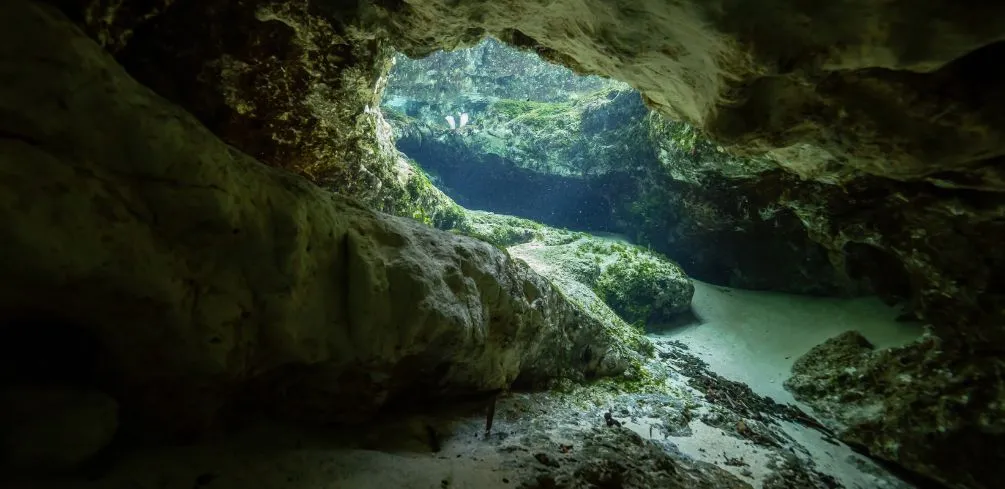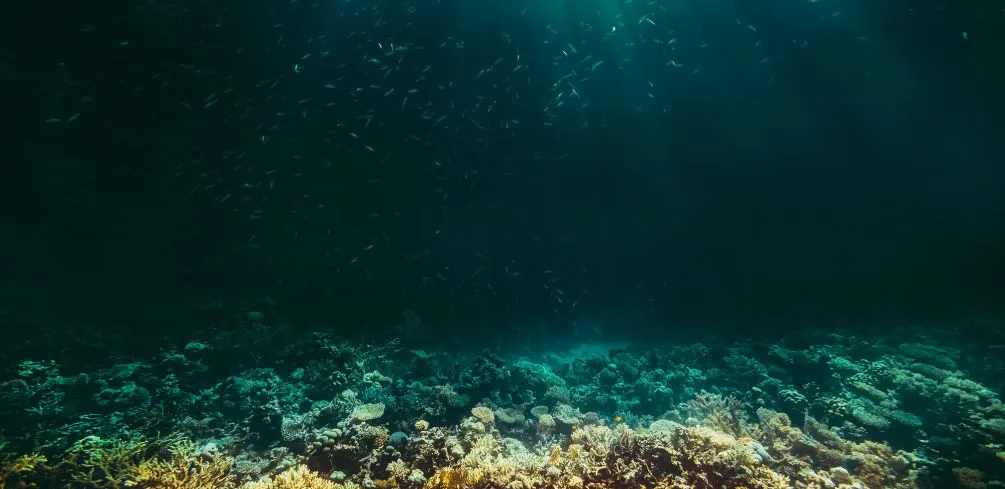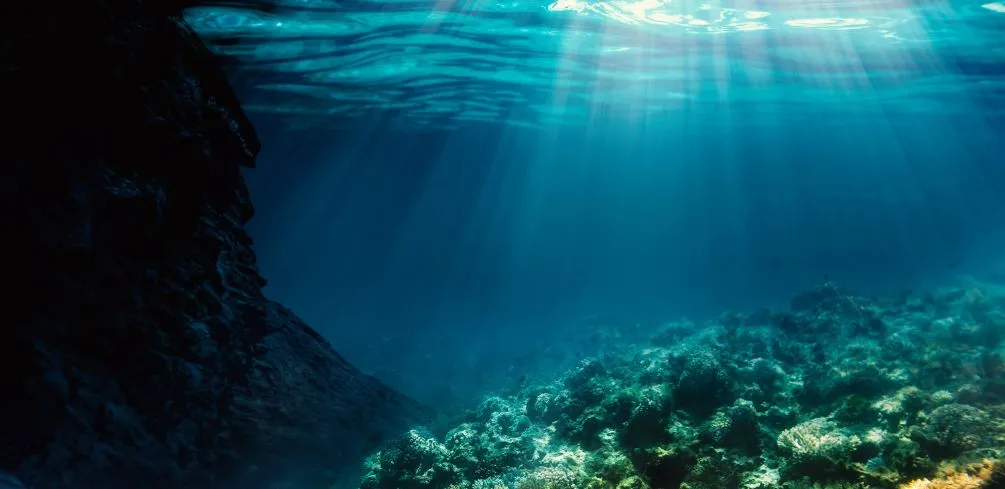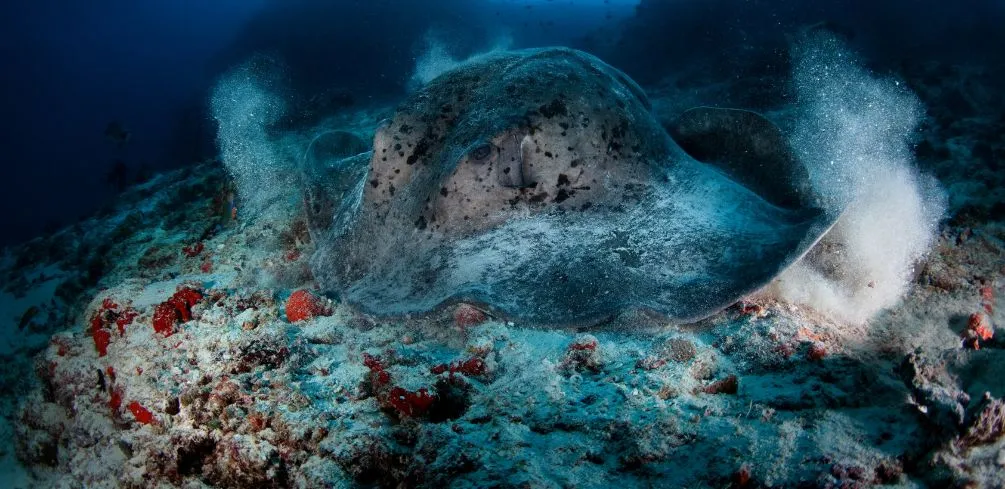Have you ever wondered what lies beneath the surface of the earth? Have you ever fantasized about the mysterious creatures that may inhabit these unseen places?
Underwater caves are one of nature’s most exciting and mysterious sites, hidden deep within the depths of our oceans. Exploring these seldom-seen realms can be an incredible experience, offering a glimpse into an alien world into which few have ventured.
In this article, we’ll take a closer look at underwater caves and discover why they are so fascinating for adventurers. We’ll explore the unique environment and its inhabitants, as well as some of the dangers associated with exploring such places. Finally, we’ll discuss why it’s important to respect and protect these valuable habitats when exploring their depths.
So if you’ve ever dreamed of visiting an exotic underwater world and experiencing something completely different from your everyday life, then come along with us on our journey to explore the depths of underwater caves!
Definition Of An Underwater Cave
An underwater cave is a unique aquatic environment found beneath the surface of the ocean or a body of freshwater. It can be incredibly complex and intricate, with a variety of rock formations and other interesting features. The term ‘underwater cave’ can also be referred to as an aquatic cave, submarine cave, or marine cave.
These caves can range in size from small crevices to large caverns that are hundreds of meters in length. They are often home to rare species of fish, coral, and other forms of sea life. Due to their delicate ecosystem, they are highly protected by various conservation laws around the world.
Underwater caves offer divers an incredible experience that cannot be replicated anywhere else on earth. Although these environments can be dangerous due to the lack of visibility and possible currents or tides, they allow adventurers to explore a unique and exciting new world beneath the surface.
With proper education and safety training, exploring underwater caves can be an unforgettable experience for any diver brave enough to take the plunge.
Types Of Underwater Caves
When it comes to underwater caves, several types can be explored. The most common type is the karst cave, which typically forms as a result of acidic water dissolving limestone and other soluble rocks over time. Karst caves usually have rocky walls and ceilings and come in all shapes and sizes.
Another type of underwater cave is the littoral cave, which is formed when waves erode weak sections of shoreline rock. These caves tend to be smaller than karst caves and can often be found in shallow waters close to the coastline.
The third type of underwater cave is a lava tube cave, which forms when molten lava flows through a crack or fissure in the ground before cooling and hardening. These lava tubes can become large, with ceilings so high that they are difficult to see from inside the tube!
Finally, there’s also something called a siphon or anchialine cave, which occurs when seawater enters an underground cavern through a tunnel or passage that has been carved by waves or currents. Siphon caves are usually deeper than other types of underwater caves, providing more challenges for divers who are looking for an adventure!
Types of underwater caves:
- Karst caves
- Littoral cave
- Lava Tubes
- Anchialine Cave
- Sea Caves
- Sinkhole Caves
- Submarine Canyons
- Bedrock Caves
- Fracture Caves
- Blue Holes
- Cenotes
Dangers And Challenges Of Exploring Underwater Caves
Exploring underwater caves can be a thrilling and rewarding experience. However, it is not without its dangers and challenges.
When you venture deep beneath the surface of the water, you enter an environment that is full of unknowns and potential hazards. One of the most significant dangers associated with exploring underwater caves is running out of air.
As divers go deeper into the caves, they must manage their air consumption carefully to ensure they have enough left for the return journey. Additionally, divers must also be aware of decompression sickness or ‘the bends,’ which occurs when a diver ascends too quickly from deep depths and does not allow enough time for nitrogen to safely leave their body.
Underwater caves can also present physical challenges to divers. With no light penetrating these depths, navigating through these dark passages requires a good sense of direction and orientation in order to avoid getting lost or stuck.
Furthermore, some cave systems are extremely narrow, with small spaces in between rocks or sediment, which can make maneuvering difficult or even dangerous if done incorrectly. Finally, cave diving requires specialized equipment such as regulators, fins, lights, and masks, which may be unfamiliar or uncomfortable at first but will become second nature after some practice dives.
When exploring underwater caves, it is important to take all necessary safety precautions in order to ensure a successful dive. Understanding your capabilities and limitations, as well as having proper training and equipment, are essential for any successful dive into the unknown depths of underwater caves.
Equipment Necessary For Exploration
Exploring underwater caves requires specialized equipment that allows divers to remain safe and comfortable while submerged. I’ll break down the essential pieces of equipment necessary for successful cave exploration:
- A dry suit is designed specifically for diving in cold water and provides insulation from the elements.
- A good pair of fins which are necessary for maneuvering around underwater obstacles or debris.
- A reliable source of light, such as a headlamp or handheld torch, to light up the path ahead.
- Safety gear like a buoyancy control device (BCD) and an oxygen tank with a regulator to ensure air supply and buoyancy control.
- An underwater communication device so that divers can stay in contact with each other during their dive.
Additionally, divers should also bring extra supplies such as spare batteries for their lights, extra food and water, and first-aid kits. It’s essential to be prepared for any situation that may arise during cave exploration.
Before venturing into an underwater cave, it’s always best to have a dive plan in place and make sure everyone is aware of all safety protocols. This will help ensure a safe and successful dive experience!
Scientific Benefits From Exploring Underwater Caves
With the right equipment, exploring the depths of underwater caves can open up a world of scientific benefits. From geological research to the discovery of marine life, these submerged cave systems offer a unique opportunity to learn more about our planet.
Let’s take a look at some of the ways that exploring underwater caves can benefit science.
| Benefits | Examples |
|---|---|
| Geological Research | Studying erosion, sedimentation, and water flow in submerged cave systems. |
| Marine Life Exploration | Discovering new species and observing how they interact with their environment. |
| Understanding Underwater Ecosystems | Investigating how organisms survive and adapt in an aquatic environment. |
| Cave Diving Safety Training | Developing techniques for safely navigating through complex underwater environments. |
By delving into the depths of underwater caves, scientists can gain invaluable insights into our planet’s natural systems. From discovering new species to understanding water flow dynamics, exploring these hidden worlds has tremendous potential for advancing scientific knowledge.
By expanding our understanding of these mysterious places, we can help protect them and ensure they remain pristine for generations to come.
Frequently Asked Questions
What Is The Cost Of Exploring An Underwater Cave?
Exploring underwater caves can be an exciting and exhilarating experience, but it also comes with a cost. If you’re planning to embark on a cave exploration, then it’s important to understand the costs associated with underwater exploration.
When it comes to this, several factors need to be taken into consideration. These include:
- Equipment: This will include items like wetsuits, fins, flashlights, and any other gear needed for cave diving.
- – Buying – Depending on what type of equipment is needed, this could range from relatively inexpensive items to more expensive ones.
- – Renting – Renting equipment can be a great option for those who don’t want to invest in buying their own gear or don’t have the budget for it.
Another factor that contributes to the cost of cave exploration is the transportation and lodging expenses. Depending on how far away the destination is and whether you plan to stay overnight or not, this could add up quickly.
Furthermore, if you’re planning on doing multiple dives during your trip, then there may also be additional fees associated with each dive.
All in all, before embarking on an underwater cave expedition, make sure to factor in all of these costs so that you’re prepared for what lies ahead. That way, you can ensure you have enough money set aside for everything you need before jumping into the unknown depths below!
Another cost is disturbing the environment. If this is an underground cave that has not been visited before, the ecosystem is vital. Try not to disturb it, and don’t leave any waste when your dive is complete.
What Is The Deepest Known Underwater Cave?
Exploring underwater caves can be a thrilling and mysterious experience for many, but what is the deepest known underwater cave? This question may stir up curiosity in those considering exploring an underwater cave.
There are many factors to consider when exploring an underwater cave, including its depths and the cost of exploration.
The largest known underwater cave is located in the Yucatan Peninsula of Mexico and has been explored to a depth of over 340 meters. It is called the Sac Actun system, and it also happens to be one of the longest underwater caves in the world, measuring over 350 kilometers in length. Divers have explored this vast system since 2007 and have discovered artifacts dating back to 9,000 BC.
The exploration of such depths requires specialized equipment and training due to the extreme environment. Safety must be taken into account when planning to explore an underwater cave, as there is always a risk involved with this type of adventure. With proper preparation, however, divers can explore these depths while still ensuring their safety.
Underwater caves offer adventurers a unique way to discover natural wonders and learn more about our planet’s history. Many people choose to take part in this activity due to its unique challenges as well as its rewards. Whether you choose to dive deep into one of these systems or observe from afar, there is much to gain from exploring underwater caves.
Are There Any Safety Guidelines For Exploring Underwater Caves?
Exploring underwater caves is an exciting venture, but one that comes with its own safety concerns. As with any extreme sport, it’s important to take the necessary precautions before embarking on your journey.
Here are some top tips for staying safe when exploring underwater caves:
- Ensure you have the right equipment for cave diving, such as a full-face mask, fins, and a wetsuit.
- Make sure you are familiar with all the safety guidelines and regulations associated with cave exploration and diving.
- Get certified in cave diving by an accredited instructor or organization.
- Embark on the journey with an equally skilled diver or guide.
Having the right equipment and being aware of the safety guidelines is essential before attempting to explore underwater caves. Whether you are a beginner or an experienced diver, understanding the risks involved in cave exploration can help keep you safe during your journey.
Taking a course in cave diving will teach you about proper technique, navigation skills, and emergency procedures should something go wrong while in the water. Additionally, it is important to be aware of any hidden dangers, such as strong currents or debris, that could pose a risk while navigating underground passageways.
Being prepared ahead of time will ensure you have a fun and safe experience while exploring underwater caves. Before setting out on your journey, make sure to inform someone where you are going and what time you expect to be back so they can call for help if needed.
Lastly, always remember to stay within your limits – listen to your body and don’t push yourself too hard during this adventure!
What Kind Of Creatures Live In Underwater Caves?
Exploring the depths of underwater caves can be an exciting yet daunting endeavor. What kind of creatures live in these mysterious and dark places? Let’s discuss the deep-sea creatures that inhabit these aquatic environments and discuss some of their fascinating characteristics.
Let’s start off with marine invertebrates, as these are some of the most common organisms living in underground caves. These animals range from small crustaceans to larger species such as crabs, molluscs, and sea stars.
They may also include bioluminescent species such as shrimp and jellyfish, which provide a unique illumination in otherwise dark environments. Not only do these organisms provide light, but they also play a vital role in nutrient cycles that keep the cave ecosystem thriving.
When exploring underwater caves, it’s important to know what other kinds of aquatic lifeforms you may encounter. Many fish species choose to make their home in these subterranean habitats, too, including catfish, eels, and even sharks!
Plus, there are plenty of cave-dwelling organisms that don’t fit into any specific category, such as amphipods or blind shrimp. While many of these creatures may seem strange or intimidating at first glance, it’s important to remember that they are an integral part of the intricate web of life found within these mysterious depths.
Studying deep-sea creatures is an amazing way to gain further insight into our planet’s vast biodiversity and appreciate its complexity even more. With careful observation and respect for the environment around us, we can all have incredible experiences while exploring underwater caves – no matter what kind of creatures we find!
Are There Any Other Recreational Activities Associated With Exploring Underwater Caves?
Exploring underwater caves can be a thrilling activity, offering the opportunity to discover hidden sea life and witness spectacular views of the ocean. But what other recreational activities can be enjoyed while exploring these depths?
Scuba diving and cave diving are two popular activities that offer a unique experience in underwater caves. Scuba diving allows you to explore marine life in detail, while cave diving lets you go deep into the mysterious depths of an underwater cave. Both activities give adventurers a chance to observe and photograph incredible sights that lie beneath the waves.
For those who aren’t certified scuba divers or cave divers, there are still plenty of opportunities for recreation. Ocean exploration is possible without any special equipment, allowing visitors to spot sea life from the surface. Furthermore, underwater photography is an exciting way to capture some of the breathtaking views found in these caves.
From scuba diving and cave diving to ocean exploration and underwater photography, there are countless ways to enjoy recreational activities while exploring underwater caves. Whether you’re looking for thrills or simply a peaceful journey below the waves, these activities offer something for everyone:
- Scuba Diving
- Cave Diving
- Underwater Photography
No matter which activity you choose, visiting an underwater cave can provide an unforgettable experience!
Conclusion
Exploring underwater caves is an experience like no other. Its beauty and the challenge of discovering its depths are truly breathtaking. I have personally been to some of the world’s deepest underwater caves, and each time I am reminded of how small we are in comparison to the natural wonders beneath us.
The cost of exploring an underwater cave may be expensive, but it is worth every penny. The feeling of being surrounded by so much history, nature, and mystery is something that can never be replicated or replaced. I remember when I first ventured into one of the deeper caves, it felt like I was entering a secret passageway to another world – a world that only a few people have ever seen or experienced before.
It is important to remember that although exploring underwater caves can be thrilling and exciting, safety must always come first. Many people forget this essential element when they go on their adventures and end up getting hurt or lost in the process.
Thankfully there are plenty of guidelines out there for those who want to explore safely, as well as experienced guides who can help you make sure you stay safe while having a great time too.
So if you’re looking for a unique experience that will leave you with memories you’ll cherish forever – then exploring an underwater cave should definitely be on your list!






